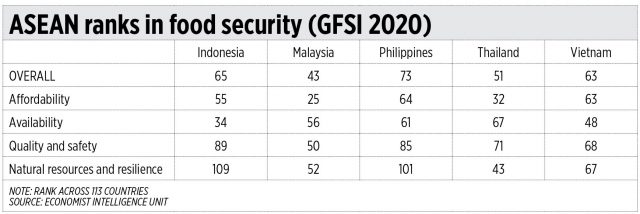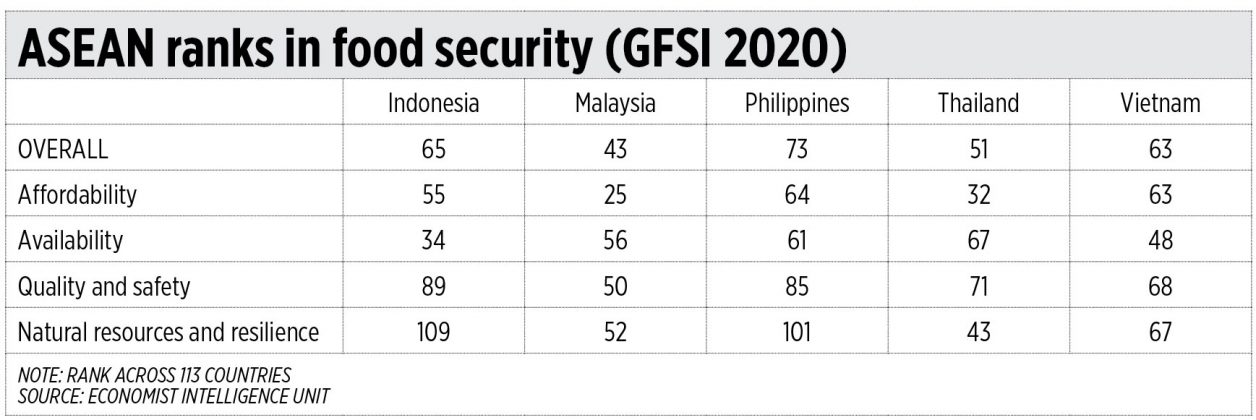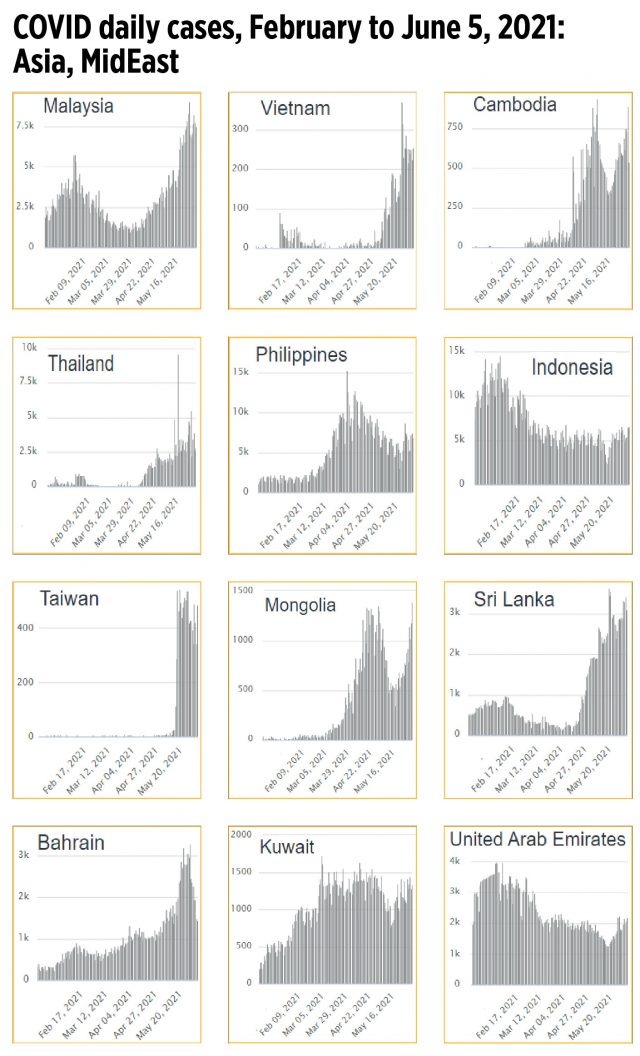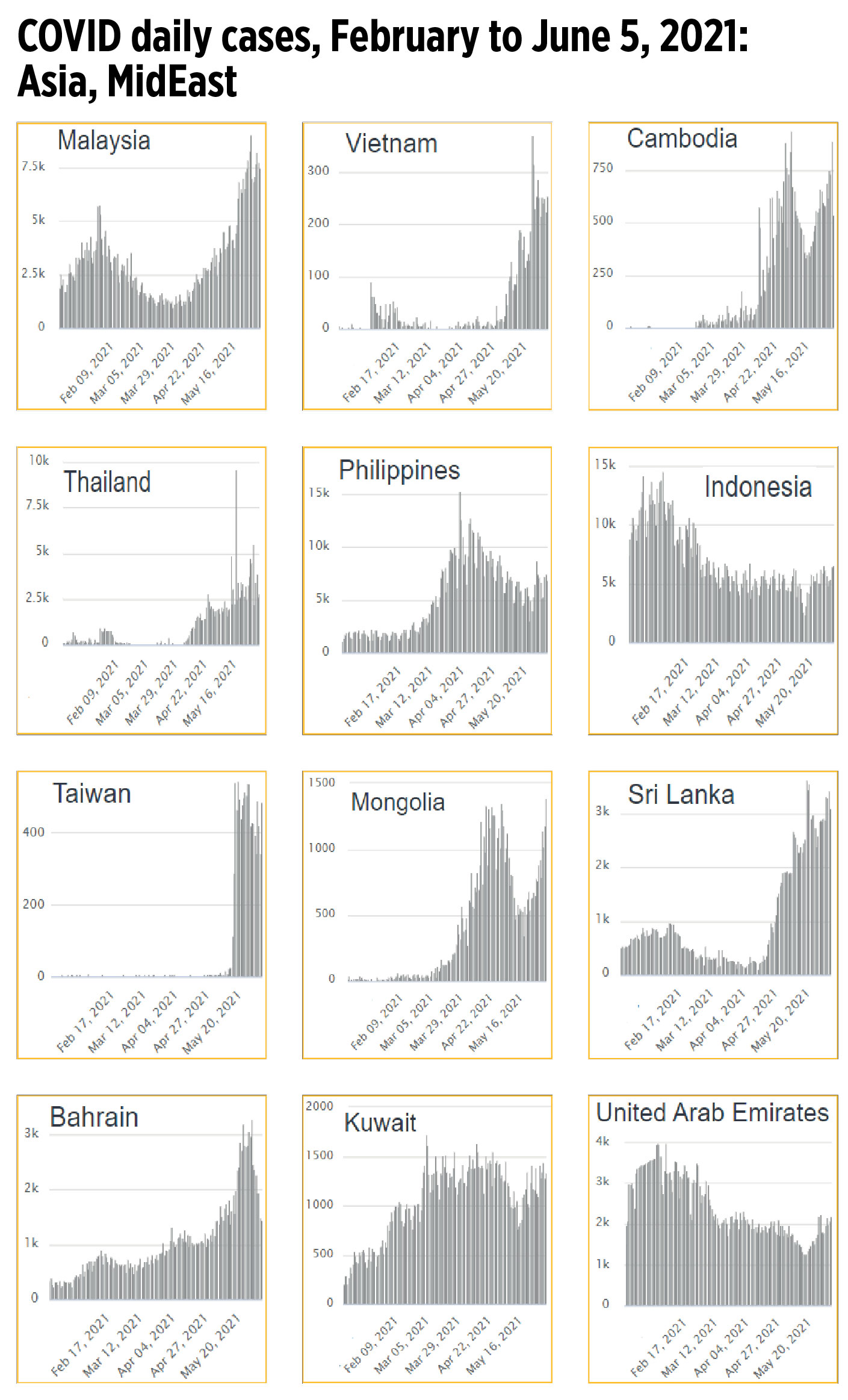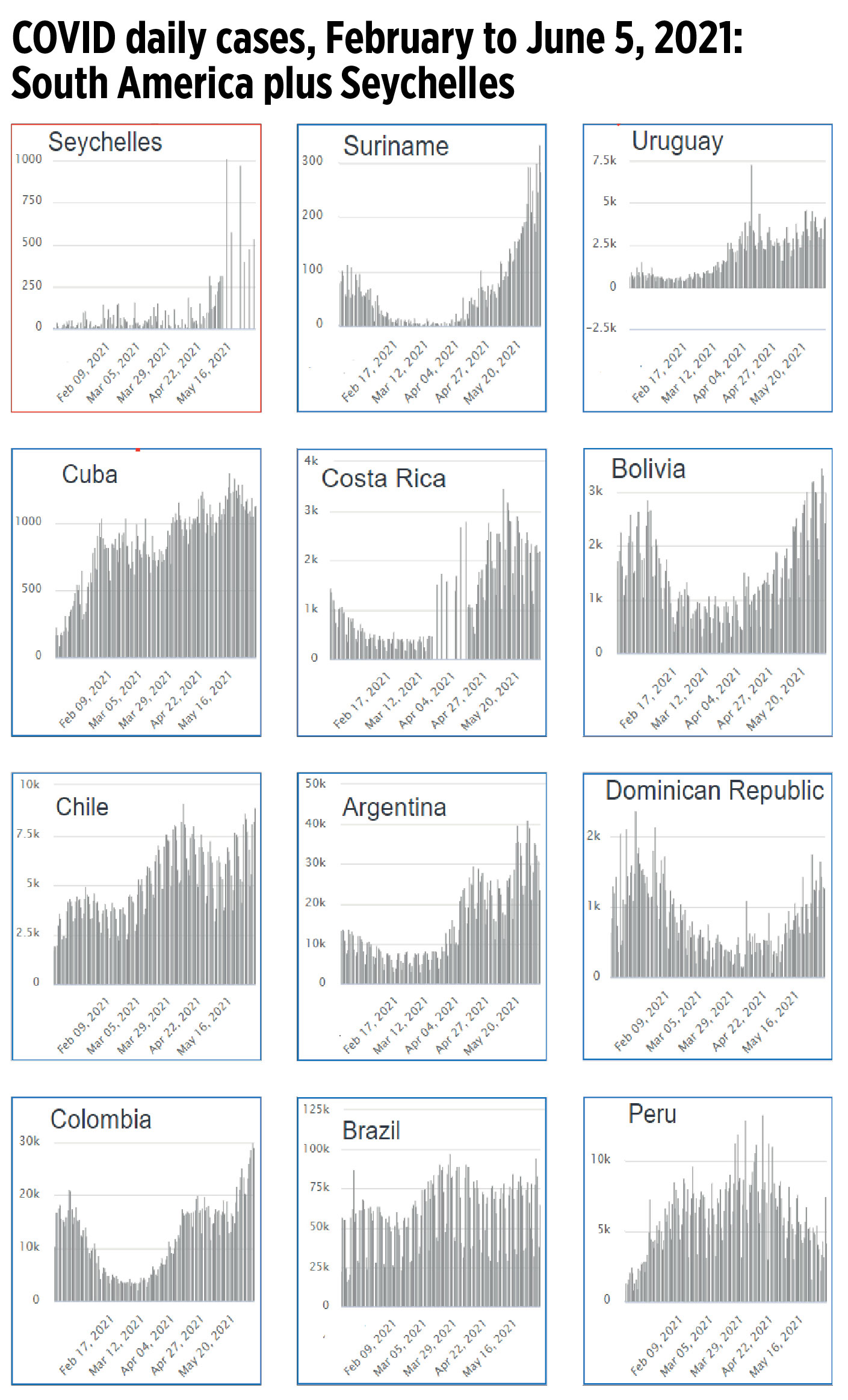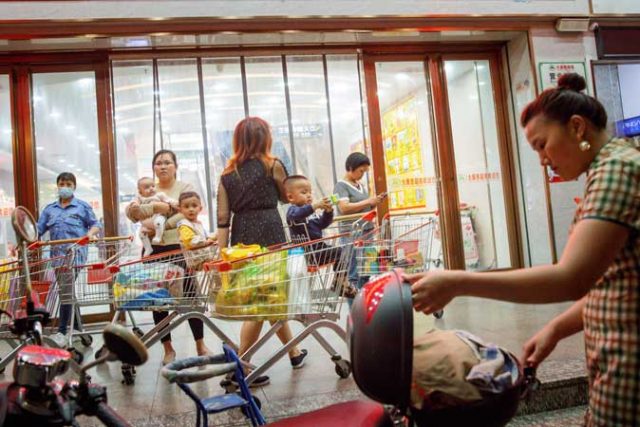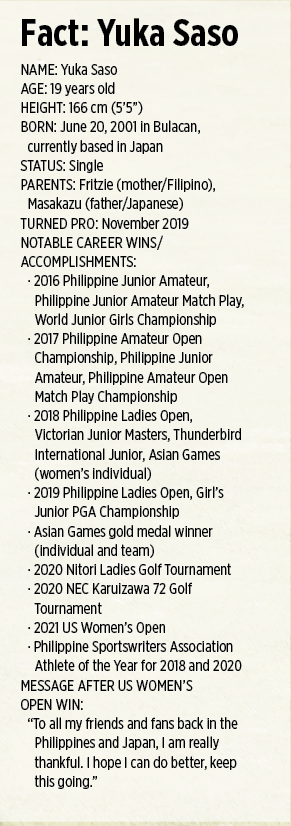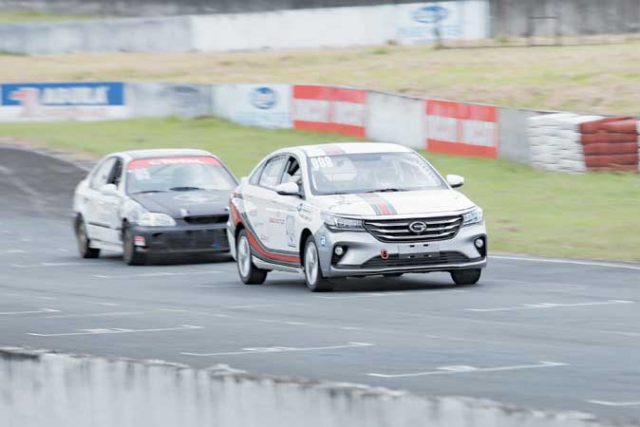GFSI: Measuring food security across countries
Food security is a pressing concern among countries, especially since food is essential to meet the needs of a growing population.
Food security means that “all people, at all times, have physical, social, and economic access to sufficient, safe, and nutritious food that meets their food preferences and dietary needs for an active and healthy life,” according to the UN Committee on World Food Security 1979 and the International Food Policy Research Institute.
THE GLOBAL FOOD SECURITY INDEX
A good measure of food security across countries is the Global Food Security Index (GFSI).
The GFSI, developed by the Economist Intelligence Unit, provides an annual assessment measuring food security through four key parameters — affordability, availability, quality and safety, and natural resources and resilience — across 113 countries. “Natural Resources and Resilience” is a recent addition to the metrics. It assesses “a country’s exposure to the impacts of a changing climate; its susceptibility to natural resource risks; and how the country is adapting to these risks, all of which impact the incidence of food insecurity in a country.” While it was introduced in the 2017 GFSI as an adjustment factor, it was only in 2020 that it was mainstreamed.
The GFSI is a “dynamic quantitative and qualitative benchmarking model constructed from 59 unique indicators that measure the drivers of food security across both developing and developed countries.”
THE COUNTRY LEADERS
In 2020, the Top 10 countries worldwide were Finland, Ireland, the Netherlands, Austria, the Czech Republic, the United Kingdom, Sweden, Israel, Japan, and Switzerland. All are high-income countries where supply availability is also notable.
In the ASEAN, Malaysia led, followed by Thailand, Vietnam, Indonesia, and the Philippines.
The Philippines lagged behind its ASEAN counterparts not just in overall food security but also in affordability. It posted the second to the lowest ranking across the other metrics.
The country, just like Indonesia, also ranked low in national resources and resilience. Both are archipelagic countries and prone to natural disasters. Both are located in the “ring of fire.”
In terms of the level of malnourishment, the Top 10 countries have very low levels of 2.5%. By contrast. ASEAN rates are higher with Vietnam at 6.4%, Indonesia 9%, Thailand 9.3%, Vietnam 6.4%, and the Philippines at 14.5%.
Food sufficiency is not directly correlated with food security. The Netherlands is food secure but not food sufficient. It is importing food. Japan also imports 40% of its food requirements.
ASEAN GFSI GAINS AND LOSSES
What were the gains/losses in the GFSI in ASEAN between 2012 and 2020?
Indonesia posted the biggest gains as its overall score improved by 5.8 points between 2012 and 2020. It led the gains in affordability and availability. Thailand was next with 1.4 points, followed by Vietnam. The Philippines was second to the last before Indonesia. It was able to post the second biggest gain in availability after Indonesia.
Vietnam was the only country which registered gains in quality and safety. All others posted losses led by Thailand.
WHAT ARE THE TAKE HOMES?
In the quest for food security, balancing the demand and supply of food is key. It is not just about having food but making it affordable and available, ensuring its quality and safety, and minimizing susceptibility to climate and natural resources risks.
Affordability counts. It is a combination of food prices and family income, including tariffs. Availability is not just about local food production but also imports. Productive farms address farm incomes and prices.
Having a management system like farm consolidation to achieve both income and economies in production, mechanization, and logistics is a proven strategy in many Asian countries. The Farm Consolidation model in Piddig, Ilocos Norte is worth looking at, driven by a well-led farmers’ group supported by the local government unit.
Food quality and safety all the more becomes important, especially at this time of the pandemic, wherein eating healthy and keeping healthy have become the mantra. It is an area that needs more attention. So is managing the risks associated with climate change as it heavily impacts food production.
This article reflects the personal opinion of the author and does not reflect the official stand of the Management Association of the Philippines or MAP.
Prof. Rolando “Rolly” T. Dy, Ph.D., is Co-Vice Chair of the MAP Agribusiness Committee and the Executive Director of the Center for Food and Agri Business of the University of Asia and the Pacific (UA&P)

